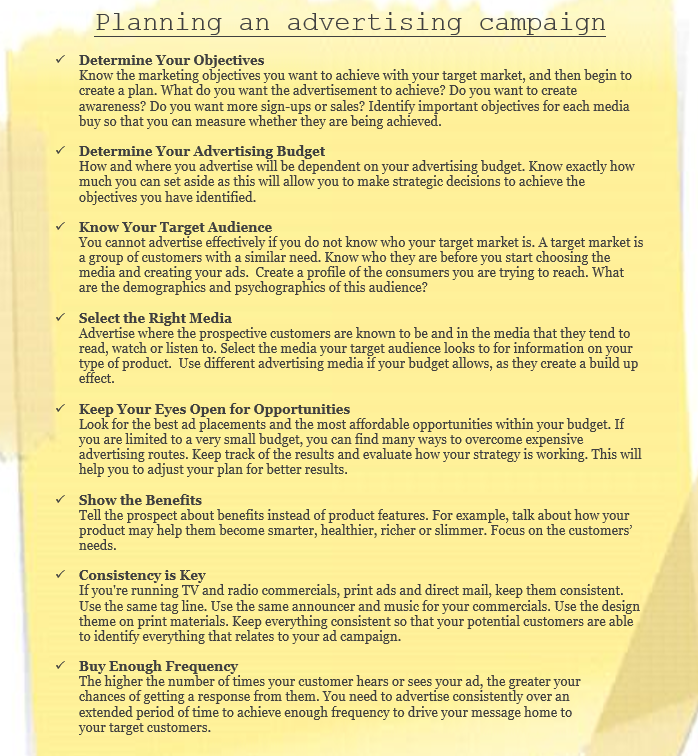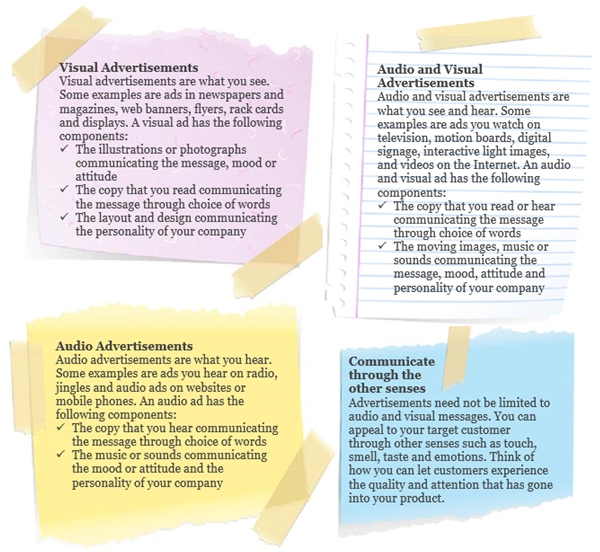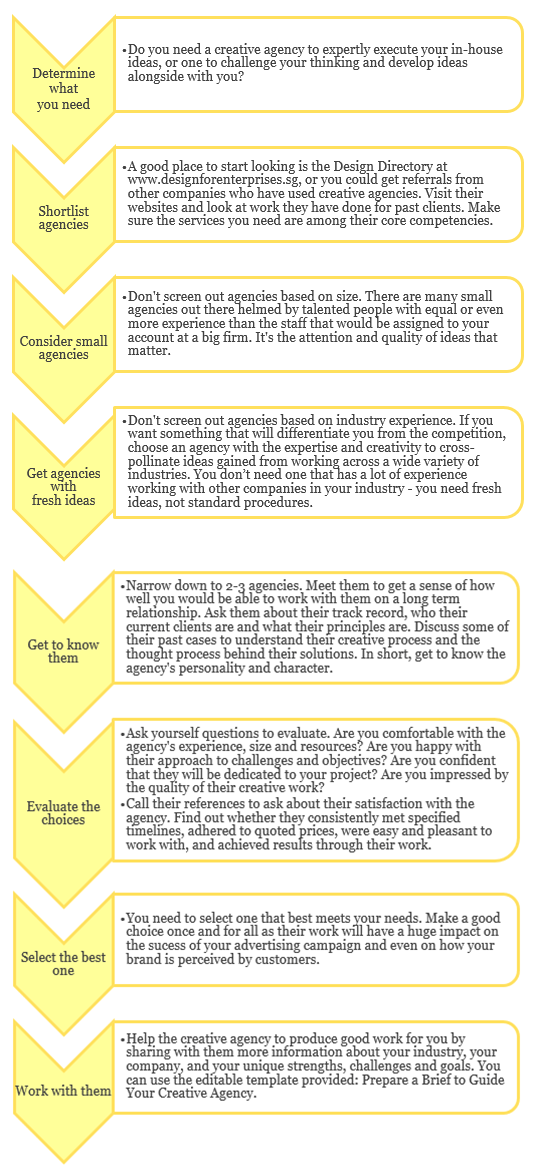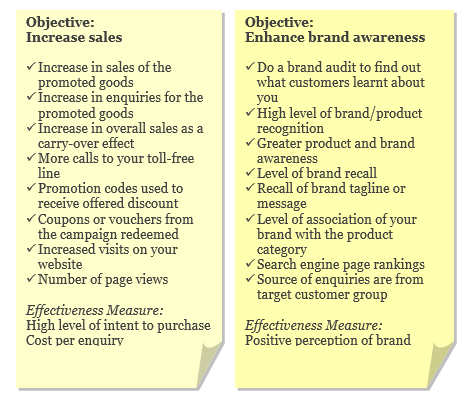How can I use advertising?
Develop an advertising campaign. Advertisements inform, educate, tease, remind, persuade and motivate customers to do something or to think in a certain way
An advertising campaign is a carefully coordinated series of messages with a single idea and theme. It aims to increase awareness of the product or service in a specific target audience in order to create a desired action, such as getting them to buy something.
A good campaign helps remind customers of your brand, reach out to prospective customers, enter new markets and increase sales. When starting an advertising campaign, test out various forms of advertising to see whether they are effective before investing more money and effort.
Advertising Must Meet Five Requirements
- Convey a clear message
- Promise a value to the buyer
- Appeal to personal needs and preferences
- Express the personality of the advertiser
- Demand action
The next section provides a checklist on what you need to consider when planning an advertising campaign. Bear in mind that your campaign should be guided by your brand, and builds on the goodwill that you have already built through your brand. Else there is always the possibility that the public will view the message as an attempt to manipulate them.
Tip
Be creative. Virtually any medium can be used for advertising.
Wall paintings, billboards, digital signage, interactive light images, street furniture, printed flyers, rack cards, radio, cinema and television adverts, web banners, electronic direct mailers, mobile telephone screens, shopping carts, web popup, skywriting, bus stop signboards, sides of buses, human billboards, magazines, newspapers, in-flight advertisements, taxicab doors, roof mounts and passenger screens, musical stage shows, MRT platforms and trains, T-shirts, giveaways, doors of bathroom stalls, stickers on products, shopping cart handles, the opening section of streaming audio and video, posters, the backs of event tickets and supermarket receipts, in-store advertisements, product placements in a movie or television series.

Prepare your advertisement. Effective ads can educate and open minds to consider how new information, possibilities and innovations can bring valuable benefits to them.

Designing better advertisements
The best advertisements are usually targeted at the reader, viewer or listener on a personal level. Let’s see how advertisements can be made more appealing to your target customer:
- A clear message.
Focus on one thing, person or event. Make sure your visuals, copy and headline convey a single clear message. The rule is that the fewer words, the better. Avoid trying to squeeze everything in. - Show your product or the benefit it offers.
Help customers imagine what it would be like to use your product. You can use pictures or words to educate, arouse curiosity or to make it memorable. Use photographs and illustrations. If you use royalty free images, check on the terms of use. Be careful not to infringe on copyright. - Make it personal.
Speak on a personal level and show how your product solves a real need or problem that your customer is facing. For example, the dramatic difference in color retention on a colorful shirt after 50 washings in Brand X versus its competitor can be highlighted. Infusing humor can be an effective tool. - Capture attention.
Think like the reader or viewer and guide his eye by keeping him flowing from one element to the next. For the listener, lead him from one idea to another. Don’t lose his attention with clutter and distractions. If there are many words, break them up with subheadings, columns and photographs. Use fonts that are easy on the eye. - Get inspiration.
Watch out for ideas you can adapt. Start a collection of magazine or newspaper
Work with a creative agency. Tap on the creativity and experience of creative agencies so that you can focus on running your business.
How to Select Creative Agency

Monitor and evaluate advertising effectiveness. Determine the effect of each advertising campaign to decide what gives you the best value for money.
If you are going to invest in advertising, then you definitely want to see results. If you do not track the results of your advertising campaigns, you could be spending your advertising budget on the wrong channels and missing out on better opportunities.
The objective is to compare the effect of the advertising campaign against what you have spent. You can then decide which channel gives you the best value for money. Following are some criteria you can measure as a gauge of effectiveness, depending on your objective for the campaign.

Tip
Using Eye Tracking & Brainwaves to Evaluate Ad Effectiveness
High-tech tools can help measure the effectiveness of ads and people’s responses to them. For example, eye tracking tools observe precisely where a person’s attention is focused in an advertisement. Through eye tracking, companies can test effectiveness of in-store applications, logo and package designs, concept testing and advertising development research. This is particularly useful when the product preferences are likely to differ across gender, ethnic groups and nationalities. The market research laboratory at Republic Polytechnic has already started some work with SMEs in this area.
Audit of Current Approach
- Does your company set an annual budget for advertising and promotion? Or do you allocate a budget as and when you decide to implement an advertising project?
- Is your advertising efforts part of an integrated marketing communications plan
- What type of advertising and promotional activities are you currently engaged in?
- Which activities have given you the best results? Which activities were the least effective? Why?
- Are you tracking and evaluating the results of your advertising and promotion activities?
- How have you adjusted your advertising and promotion plan based on your evaluation? How have you re-allocated your budget based on your evaluation?